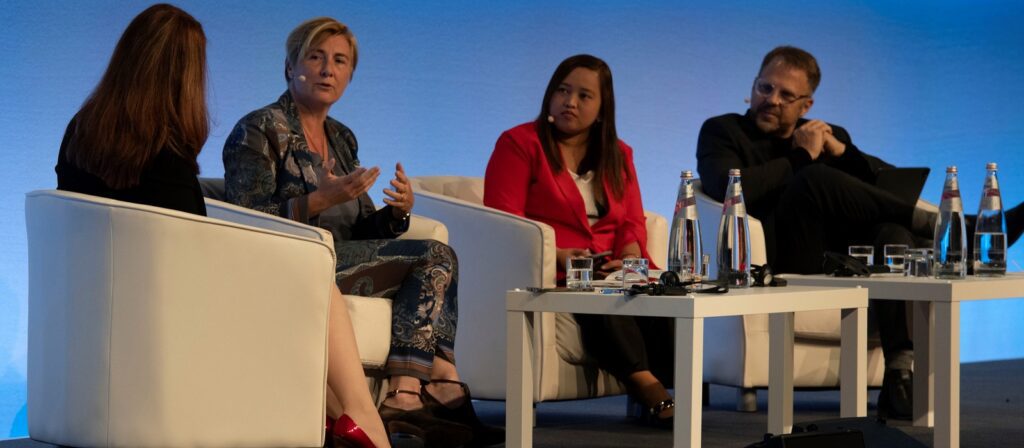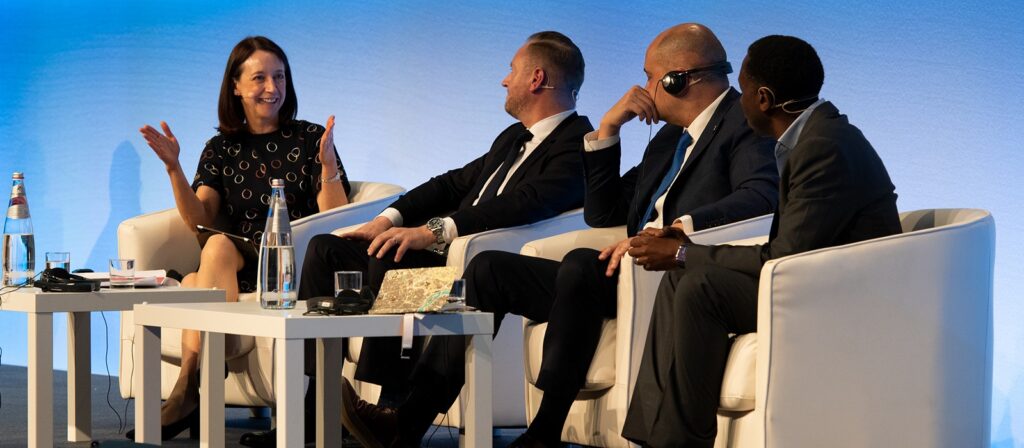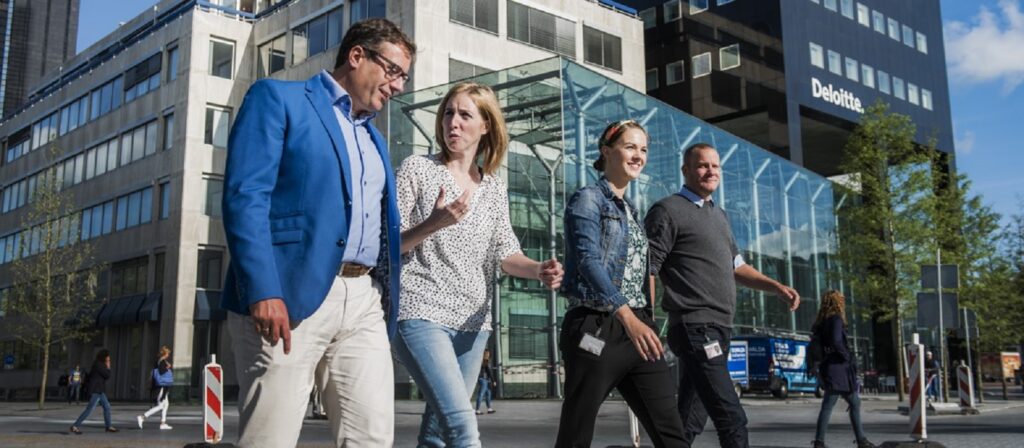Across industries, companies are experiencing an evolving business landscape, accelerating the need to rethink our approach to transformation as one of constant evolution. A human-centric approach is key to building adaptability in your people, preparing them for change and a future-ready workforce. Humans@Center means the human element is not seen as a single workstream, but as a focal point underpinning and enabling the entire transformation.
There are several macro trends causing change and disruption and accelerating the need to rethink how we do we do business and grow.
- Changing generations in the workplace: Baby boomers are transitioning to retirement. Millennials and Gen Z who are replacing them have significantly different expectations of their workplaces and organizations.
- ESG adoption is becoming table stakes: In 2020, 85% of investors considered environmental, social and governance (ESG) matters when making financial decisions.
- Technology and digital collaboration tools are expanding: Growth in the global digital workplace is significant, estimated at a compound annual rate of 21% by 2028.
- Skills shortages: The EY 2022 Work Reimagined survey revealed in the last year, 68% of employers noted employee turnover has increased. At the same time, 75% of employers are looking at moderate to extensive changes in learning and skills according to EY’s Physical Return and Work Reimagined study.
- Inflation and recessionary risk: Canada’s inflation, for example, accelerated to 8.1% in June of 2022 – the highest in the last 20 years.
These are just some of the challenges right now. Two years ago, they looked very different, with COVID lockdowns rolling throughout the globe. It’s hard to predict with any degree of certainty what organizations will be facing two years from now.
A recent EY Board Risk Survey shows that 83% of board members believe market disruptions have become increasingly impactful and 87% believe they have become increasingly frequent. Illustrating this, 50 years ago, more than 80% of balance sheet value of Fortune 500 companies was physical — such as plants, equipment and inventory. Today, more than 85% of Fortune 500 balance sheet value consists of “intangibles” — intellectual property, brand value and a host of things more closely tied to human capital than to physical and financial capital5.
As Fortune so aptly put it: “People are today’s value drivers.” 5 It’s unlikely that 50 years ago leaders could have predicted that people as a value driver would be the norm. Whether it be recovering from the pandemic, preparing for a recession, changing business models, dealing with talent shortages or evolving to match industry disruption: without a crystal ball, it’s hard to know what’s coming next. Organizations are in a constant state of evolution and disruption.
All of this points to a need to build a fundamental growth mindset and change capability into the fabric of organizations — approaching transformation not as a “one and done” exercise, but as a constant evolution. By putting humans at the center of transformation efforts and embracing new ways of adapting technology, collaborating and learning, leaders can build a growth mindset and agility into the fabric of their organization, preparing themselves for whatever comes next. We are in the human digital age.
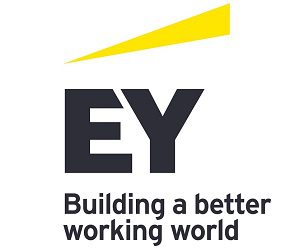
This article was authored by Danielle Ivosevich, EY Senior Manager, Business Transformation, and Jackie McPhedran, EY Manager, Business Transformation.
This article is part of a four-part series where EY discuss how organizations can embrace technology with people in mind, instilling a culture of learning and building behaviours associated with next-generation leadership.
The article is reproduced with the kind permission of ICMIF Supporting Member EY.
Published January 2023
Humans@Center
EY recently teamed with the University of Oxford to study what makes a transformation effort successful. The study results were clear: giving specific focus to a series of human factors can increase the probability of transformation success to more than 70%.
The study surveyed over 900 C-suite executives in 23 countries and found that organizations that put humans at the center of their transformation efforts are 2.6 times more likely to succeed in their transformations than those that don’t.
This isn’t just about human-centric transformation, but also about embedding a growth mindset into organizational culture to support the development of the next idea, strategy, product or service. Fundamentally, this growth mindset means hiring and encouraging employees who are oriented towards learning so they’re in the forefront of future-proofing themselves.
So what does it mean to put humans at the center of your transformation? In summary, the human element is not seen as a single workstream, but as a focal point underpinning and enabling the entire transformation.
Consideration is given to the human element in all aspects, with specific attention paid to intangibles that may have previously been overlooked, such as emotional support, leadership, vision and culture. These are four of the six key drivers of successful transformation, in addition to technology and process.
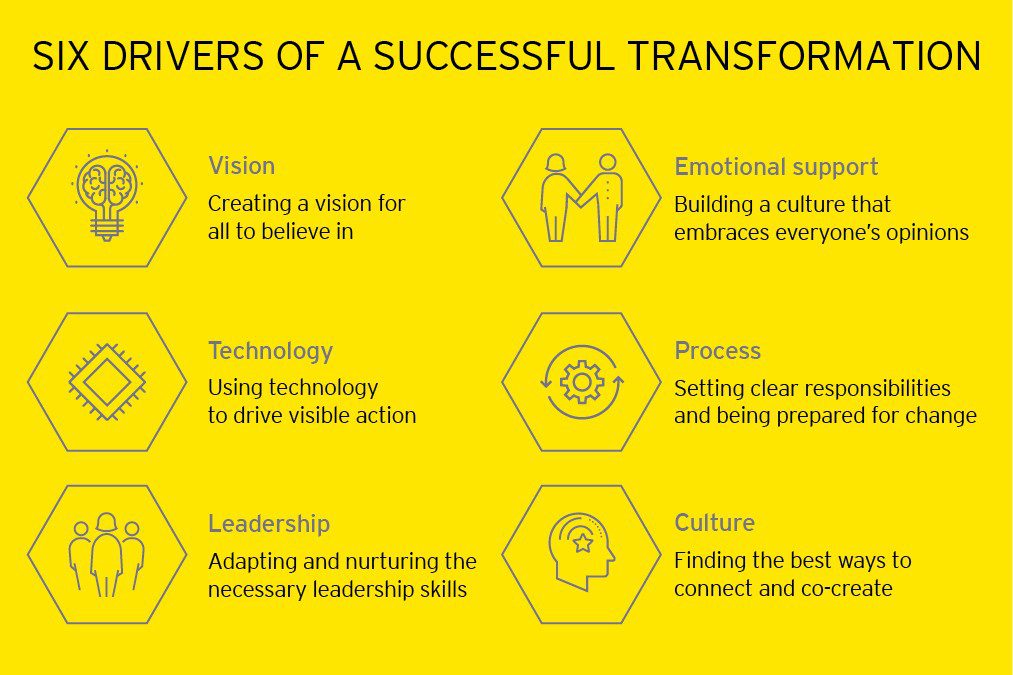
The human element transcends how we work, how we learn and how we lead. Without proper consideration, it will inhibit the growth and change your organization is looking to achieve.
By taking a more human-centric approach to transformation and giving due focus to the six drivers, there was a clear delineation in the study results between those organizations that were considered low performers vs. those that were considered high performers when it came to successful transformation.
Not only does a human-centric approach make sense when an organization is planning and executing a transformation, it’s also key to building adaptability in your people, preparing them for upcoming change and building a future-ready workforce. That includes building an organizational culture that supports continuous growth and evolution.
In keeping with the theme of putting humans at the center, the next three parts of this series will discuss how your organization can build a more future-ready workforce — through embracing digital technology with people in mind, instilling a culture of continuous learning and building behaviours associated with next-generation leadership.

